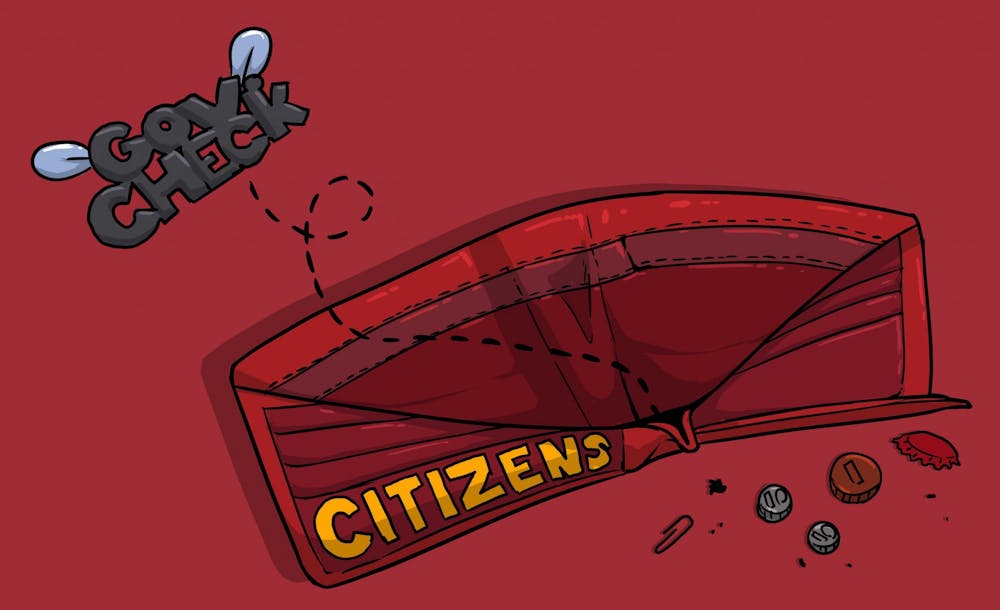President Donald Trump signed the $2.2 trillion stimulus bill aimed at providing economic relief to Americans and businesses amid the COVID-19 outbreak on March 27, but some students aren't seeing its benefits.
The bill, which is over 800 pages, includes $300 billion in direct payments to qualifying Americans, about $250 billion in unemployment benefits, and the Trump administration also suspended student loan payments.
But $1,200 direct payments will not go to anyone who is claimed as a dependent, which frustrates students like Jose Munguia, a sophomore studying economics and vice president of Young Democrats at ASU.
"Students are always the forgotten ones," Munguia said. "We're still dependents, but most of us are fending for ourselves."
The Coronavirus Aid, Relief, and Economic Security Act passed with a 96-0 vote in the Senate on March 25, followed by a vote in the House on March 27 and the President's signature later that day.
Here are a number of ways the bill and recent Trump administration action will impact students.
Payments
The bill allocated $300 billion for one-time direct deposits to Americans who qualify, but all students who are claimed as a dependent will be ineligible for the payment.
Single adults who made $75,000 or less in 2019 will receive $1,200, and couples who filed together and made $150,000 or less will receive $2,400.
Single adults making up to $99,000 or couples with no children making up to $198,000 annually will receive a decreased amount.
Payments will increase by $500 for every dependent under the age of 16.
No payments will be made to any American if they are claimed as a dependent, which includes many college students and people under the age of 24.
"People who really need (the money) won't get it because of the requirements," College Libertarians President David Howman, a graduate student studying justice studies, said.
Howman criticized the "bureaucratic red tape" that he thought prevented testing early, but said that the payments were an "appropriate and direct response."
"We've only gotten here, though, because of ineffective leadership," Howman said.
Other clubs, like Young Democrats at ASU, shared on social media that the amount of the checks wasn't enough.
"The cost of living is so much higher in Phoenix alone than the amount you could get," said Munguia. He also said many students feel they were left out of the legislation.
Both club leaders said that stimulus checks in an appropriate and repeated amount could have been more effective in helping working Americans and other struggling groups.
But the clubs both scrutinized the amount of money that was really going into the hands of the American people.
"Businesses and corporations are also getting money ... which gets the government to pick who wins and who loses," Howman said, voicing frustration with the government resorting to such "extreme methods."
Student Loans
The Trump administration extended its previous decision to waive all interest rates and suspension of payments through September 30.
"We hope these actions and others we’ve taken ... will help alleviate the financial burden and anxiety students and their families are feeling during these tough times," said Secretary of Education Betsy DeVos in a March 27 press briefing.
Eligible loans include those owned by the Department of Education. Some Federal Family Education Loans and Federal Perkins Loans are not eligible.
During this period, the collection of wage garnishment, tax refunds and other federal benefit payments will be suspended.
If borrowers choose to suspend their payments during this period, the federal government will still treat it as if a payment had been in made in order to help qualifying individuals meet the requirements of loan forgiveness or loan rehabilitation programs.
Federal student loan borrowers will begin to receive notices beginning August 1 informing them of when payments will once again resume, and borrowers will be offered the option to enroll in income-driven repayment.
Unemployment Benefits
Over 6.6 million initial unemployment claims were made in the U.S. during the week ending March 28, up about 3 million from the previous week.
Those eligible for benefits under the bill include people unemployed or partly unemployed. The plan also allows anyone who is self-employed to receive benefits.
The federal government will be giving eligible workers $600 for up to four months in addition to state unemployment assistance.
Unemployment amounts vary from state to state. According to the Arizona Department of Economic Security the current weekly maximum for the Unemployment Insurance Benefit Amount is $240.
People can apply for unemployment benefits by visiting their state's website.
Reach the reporters at pjhanse1@asu.edu and mtorrest@asu.edu and follow @piperjhansen and @thomasmadison_ on Twitter.
Like The State Press on Facebook and follow @statepress on Twitter.

Piper Hansen is the digital editor-in-chief at The State Press, overseeing all digital content. Joining SP in Spring 2020, she has covered student government, housing and COVID-19. She has previously written about state politics for The Arizona Republic and the Arizona Capitol Times and covers social justice for Cronkite News.




